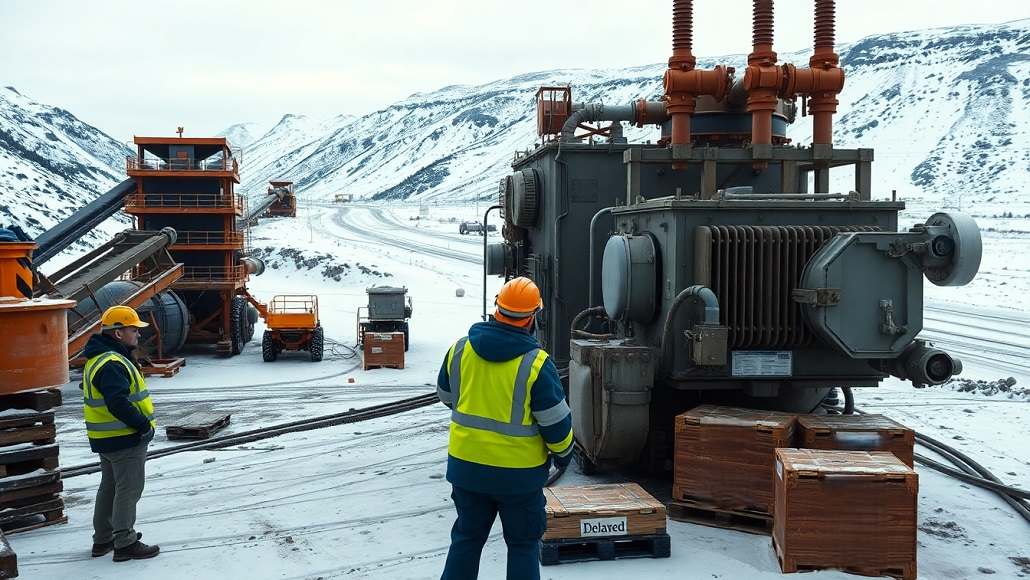The mining industry in Canada is the backbone of many provincial economies. However, the operations when it comes to the complete industry depend on a few large and heavy-duty components. These important parts directly affect the profitability, production, and, of course, the long-term viability when it comes to mining operations. But the rising challenge is when it comes to the global supply chain disruptions, which are characterized by unmatched lead times in terms of essential equipment that are indeed forcing a fundamental transition in how Canada approaches machinery maintenance in mining. Routine, along with proactive machinery maintenance in mining, is not just the best practice that is there; it is also a critical strategy for survival.
Supply chain susceptibility, the reality
The global supply chain prices have gone on to expose prominent susceptibility within the mining industry. Let’s consider the lead times when it comes to key components—large power transformers, which are vital for powering the complete mine sites now need 3 to 5 years when it comes to deliveries. Girth gears, which are essential in terms of grinding mills, happen to face lead times of almost 6 to 12 months. These kinds of delays can actually cripple functions.
Apparently, there are many Canadian mines that face additional barriers. Remote locations, dependence upon specific transportation infrastructure, and rough weather scenarios all add up to the layers of intricacy.
A broken-down transformer within a mine that is accessible only by way of road can happen to mean weeks, if not months of production that is lost. It is worth noting that the consequences when it comes to equipment failure can be commercially devastating. A failure of a single transformer can actually halt production, thereby resulting in millions of dollars of lost revenue as well as potential reputational damage too. Then infrastructure in a site is also deeply connected. There are drills, conveyors, crushers, and also electrical grids, which happen to depend on one another. A failure in one area can actually trigger a cascading effect, thereby bringing the entire functional part to an abrupt standstill.
The seven-factor framework – proactive approach
It is well to be noted that the key to lessening these kinds of risks lies in terms of the adoption of a proactive and structured approach. Apparently, the best practice model happens to be a seven-factor risk evaluation framework, which helps the operators to pinpoint crucial exposure early, thereby prioritizing the actions and also funding the mitigation strategies. This model happens to focus on frequency drivers along with severity drivers in terms of equipment failure.
The frequency drivers happen to include-
Physical environment – Climate considerations like seasonal changes and extreme temperatures happen to demand specialized maintenance protocols.
Operating scenarios – High stress, as well as rough environments, speed up the wear and tear.
Training of the operator – A skilled workforce happens to be a very critical set when it comes to proper equipment handling and also early detection in terms of any potential barriers.
Benchmark practices in maintenance – Preventive machinery maintenance in mining schedules, which include lubrication as well as consistent inspections, are mandatory.
History of the function – Getting to learn from the past incidents and also identifying issues that continuously take place is vital for consistent enhancement.
The Severity drivers include-
Exposure to contingency planning – One has to have well-defined plans in place for numerous scenarios pertaining to failure.
Devices related to safety – Testing when it comes to instrumentation so as to prevent any excessive damage to the equipment in a problematic scenario.
The approach has to be proactive
The fact is that one has to take a proactive approach with preventive measures in place, and it is indeed a very cost-effective investment as compared to the potential costs as far as the downtime is concerned. Routine condition tracking, like vibration evaluation along with thermal imaging, can also pinpoint potential problems in a very early stage, thereby helping with timely repairs and also safeguarding against certain catastrophic issues. Apart from this, additional measures can also include the non-destructive testing of critical gears along with the inspection of components as well as hoists, which, by the way, are highly stressed. Operator training refreshers make sure if proper equipment handling, and all this leads to the risk in terms of human error getting minimized. Contingency planning, on the other hand, offers a roadmap so as to handle emergencies, eradicate the downtime, and also cut any kind of potential damage.
Although stockpiling the spare parts may not always be feasible because of cost as well as storage issues, a well-documented contingency plan is the way forward because it includes detailed engineering drawings so as to have rapid repairs in place, pre-negotiated access in terms of mobile substations or, for that matter, any other critical equipment, and clarity in terms of fabrication timeframes when it comes to the replacement parts.
Marching forward
It is worth noting that it is indeed becoming increasingly important for mining operations in Canada and around the world to step up the game and face the ongoing supply chain challenges by way of taking a proactive approach with certain preventive measures as well as putting some robust contingency plans in place.
Through embracing a proactive approach, stressing risk evaluation, and also funding preventative measures, mining companies can slash the effect of supply chain disruptions and at the same time also make sure that the long-term viability of the operations gets maintained.























